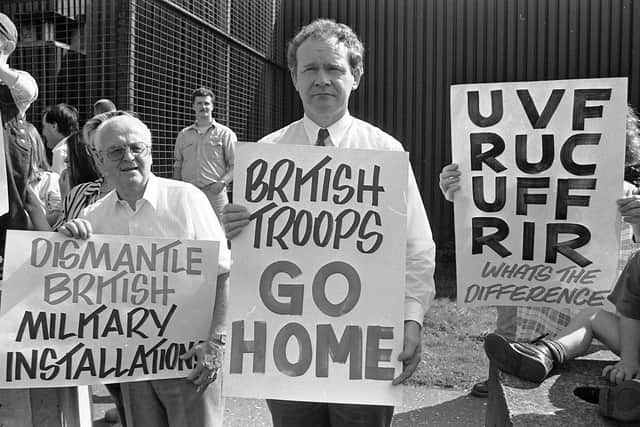State Papers: Fort George decommissioning complex due to potential ammo, tanks and pollution
and live on Freeview channel 276
That’s according to a formerly confidential briefing file on the demilitarisation of the old British army barracks that has now been declassified under the 20-year-rule.
The briefing document dated May 26, 2000, and prepared by Susan Scholefield, of the Northern Ireland Office (NIO) Security Policy and Operations Division, urged the then Secretary of State Peter Mandelson to agree that work could start on the normalisation of British army barracks and fortifications at Fort George, Cookstown. Cloghole and at the Broadway and Templer Towers in Belfast on June 2, 2000.
Advertisement
Hide AdAdvertisement
Hide AdThe note explained how on May 9 of that year the RUC Chief Constable Ronnie Flanagan had announced the 'vacation of the Fort George Army base on the West bank of the Foyle and the return of the land to the Londonderry Harbour Commissioners'.


Ms. Scholefield pointed out that Fort George or ‘RUC Shantallow’ dated from WW2 and that the process of demolishing it and returning the leased land to the Londonderry Port and Harbour Commissioners would likely be ‘long and complex (there could be problems with underground fuel tanks and pollutions, and conceivably with old ammunition)’.
The memorandum states: “Some assets will need to be relocated or alternatives found (it is currently the only place from which the Royal Marines and RUC can mount waterborne search operations on the River Foyle and contains, for example, the only helicopter landing site West of the Foyle. If reinforcements had to be flown in because bridges were blocked, alternative options would include requisitioned supermarket car parks etc).
“If the Secretary of State is content, on June 2, the Army Company at Fort George will move back to Ebrington Barracks, leaving only a guard force.
Advertisement
Hide AdAdvertisement
Hide Ad“Work will be seen to have started as soon as the Royal Engineers start to remove some high profile hardware such as sangars shortly thereafter.”
Mr. Mandelson was informed of the complexity of the work. It was pointed out that costs would have to be shared with the RUC due to the necessity of removing a police building on the site.
“Again allowing some eight weeks to let the contract, contractors will start work in mid-August to remove buildings and hardened structures, while Royal Engineers remove security infrastructure. The target date for completion is February/March 2001,” she stated.
Ms. Scholefield advised that there was a potential that the demilitarisation process would have to be reversed if there was a deterioration in the security situation.
Advertisement
Hide AdAdvertisement
Hide Ad“The projects may require some additional Royal Engineers, particularly during the July 2000 period (and timelines could slip a little if this period proves very difficult).
"It is as yet too early to establish even broad orders of cost. Work should be revrsible for several months, shoudl threat levels again rise.
“The Secretary of State is invited to agree that: work should start as proposed at all sites on June 2,” the note states.